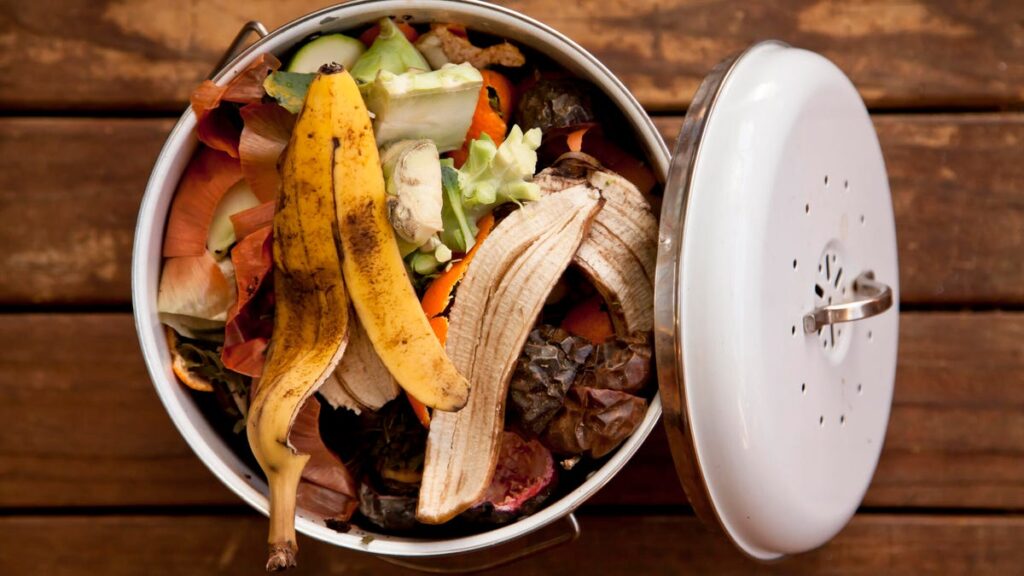Composting is science and making truly usable plant and garden fuel requires a careful balance of dry brown material and wet, nutrient-rich green. The latter usually consists of kitchen waste but adding the wrong leftover or discarded foods can ruin your carefully curated compost.
If you want to compost meat and dairy — both of which tend to attract pests — I recommend a countertop food waste processor such as the Mill Bin or Lomi, which dry and grind food down to a dirt-like substance. These countertop contractions don’t make compost but they’ll make the composting process a whole lot less smelly and gross.
You’ll also want to learn what foods, plants and household products don’t belong in a compost pile. Foods high in oil, sugar or artificial ingredients often don’t do well in the bin. Meat and fish can technically be composted but adding them to the heap might be more trouble than its worth (more on that later).
Below you’ll find a list of foods and household items that shouldn’t and should go in your compost pile.
Read more: Are Countertop Composters Worth It? I Calculated My Food Waste for a Week to See
What is composting?
Composting is a way to help food trash and other organic items decompose into a substance that can be used to alter the composition of soil so that it’s more nutritious for plants. To start the composting process, certain bacteria activators are added to the organic material to create heat. The heat causes the organic material to decompose more quickly than it would out in nature.
Items that can’t be composted
- Cooking oils
- Foods high in added fat and oil
- Cheese, milk and and other dairy items
- Sugar
- Candy and other foods containing excess sugar
- Large amounts of cooked food
- Highly processed canned and packaged foods
- Cat litter
- Dog waste
- Certain houseplants
Items that can be composted
- Fruit and vegetable scraps
- Cores, peels and rinds
- Coffee grounds
- Grass clippings
- Leaves
- Beans and legumes
- Seeds and nuts
- Herbs and greens
- Egg shells
Can you compost meat and fish?
Some gardeners add fish, meat, bones and dairy products to their compost. This is fine, unless you have a problem with rodents or raccoons. These foods create a strong smell that scavengers can’t resist.
If you want to compost meat and seafood without the risk of attracting critters, a countertop organic waste processor will grind and dry your scraps so they’re akin to dirt and not something that would interest a wild animal.
Items you should never put in a compost pile
Outside composting
There are two main ways of composting: outside and inside. First, let’s take a look at outside composting.
Some gardeners prefer to have a compost pile in their yard. This is exactly what it sounds like. It is a pile layered with grass clippings, food bits, sticks and dead leaves.
The pile is started in a sunny area with a layer of twigs and sticks on the ground to help with airflow. Then, moist organic material (like food scraps or grass clippings) is layered with dry material, such as leaves, twigs and sawdust. That dry material is crucial because you don’t want the compost to be too damp, which will cause foul odors and attract pests.
This type of composting takes some work because the pile will need to be turned (basically mixed up) every week or two using a pitchfork or compost aerator. The benefit is that it’s basically free. The only items you need to purchase are a turning tool and some compost activator.
An easier outdoor solution is a compost tumbler, like the Yimby ($79) or this Miracle-Gro large dual-chamber compost tumbler ($130). Both of these consist of rotating barrels that you throw your yard and food waste into and then spin five to six times every two to three days. The spinning mixes the compost to encourage quick and even decomposition.
The same rules about wet and dry material apply; you need to keep the compost well-balanced so that it breaks down correctly. When choosing an outdoor system, also be sure to look for a unit that has many aeration holes to release gasses caused by the food decomposing. A closed container can explode if too much pressure from gasses builds up.
Indoor composting
Indoor composting is almost foolproof with high-tech compost bins, like the Zera or the Food Cycler Platinum. With this type of unit, you just drop in the food scraps and compost activator. The unit uses heat and pressure to turn the scraps into fertilizer, usually within three to 24 hours. Some units can produce about two pounds of fertilizer for eight pounds of food waste.
OK, I have decomposed compost, now what?
Once the food items are decomposed, it will look almost like woody dirt. You can sprinkle small amounts in house plants or till large amounts into a garden plot. You can also sprinkle it on your lawn or trees to make them healthier.
When you’ve exhausted your finished compost, you can continue the process by adding food scraps and yard waste to your pile or compost bin. A well-cared-for compost pile can give you compost for years to come.
Read the full article here

